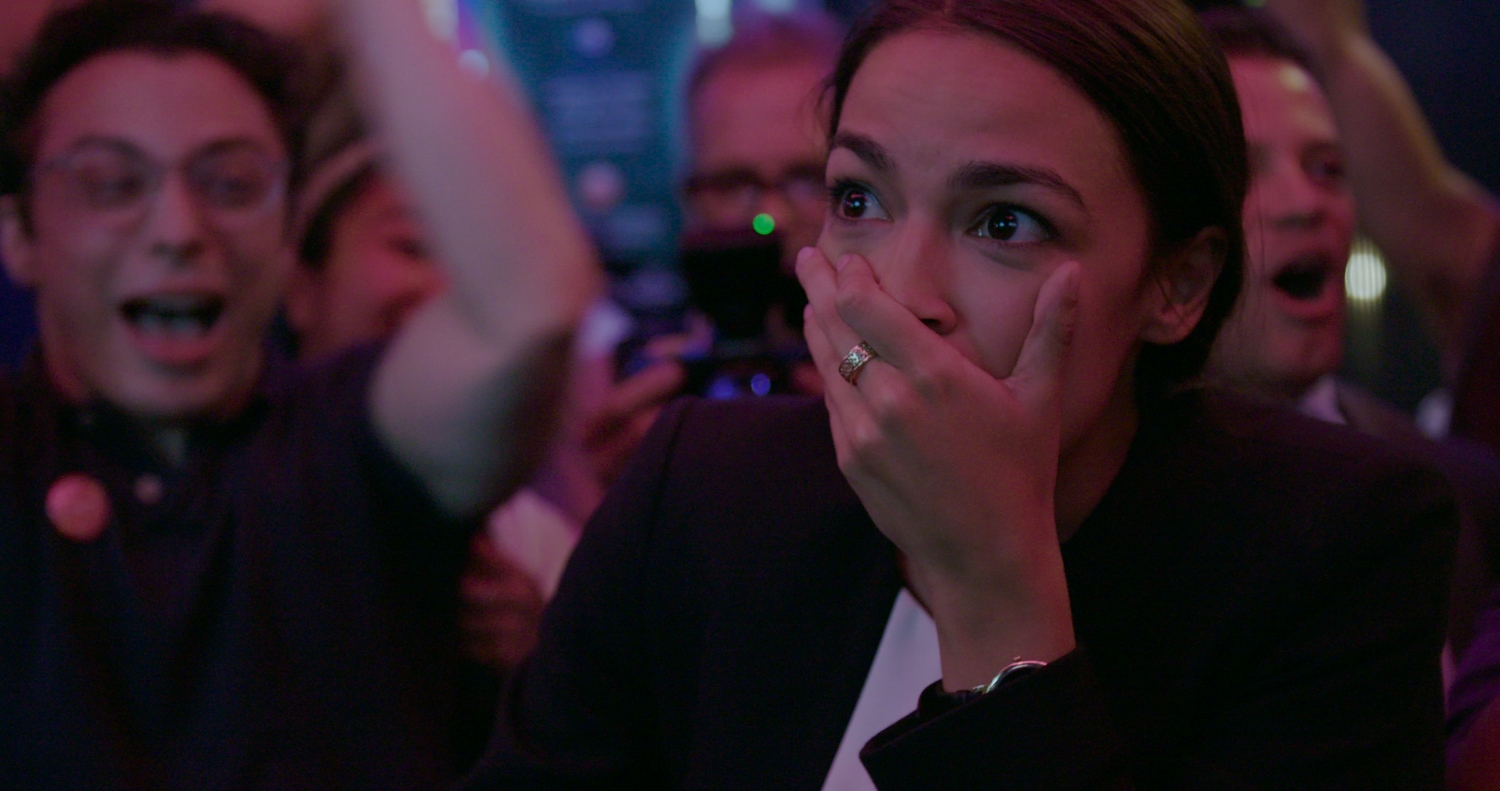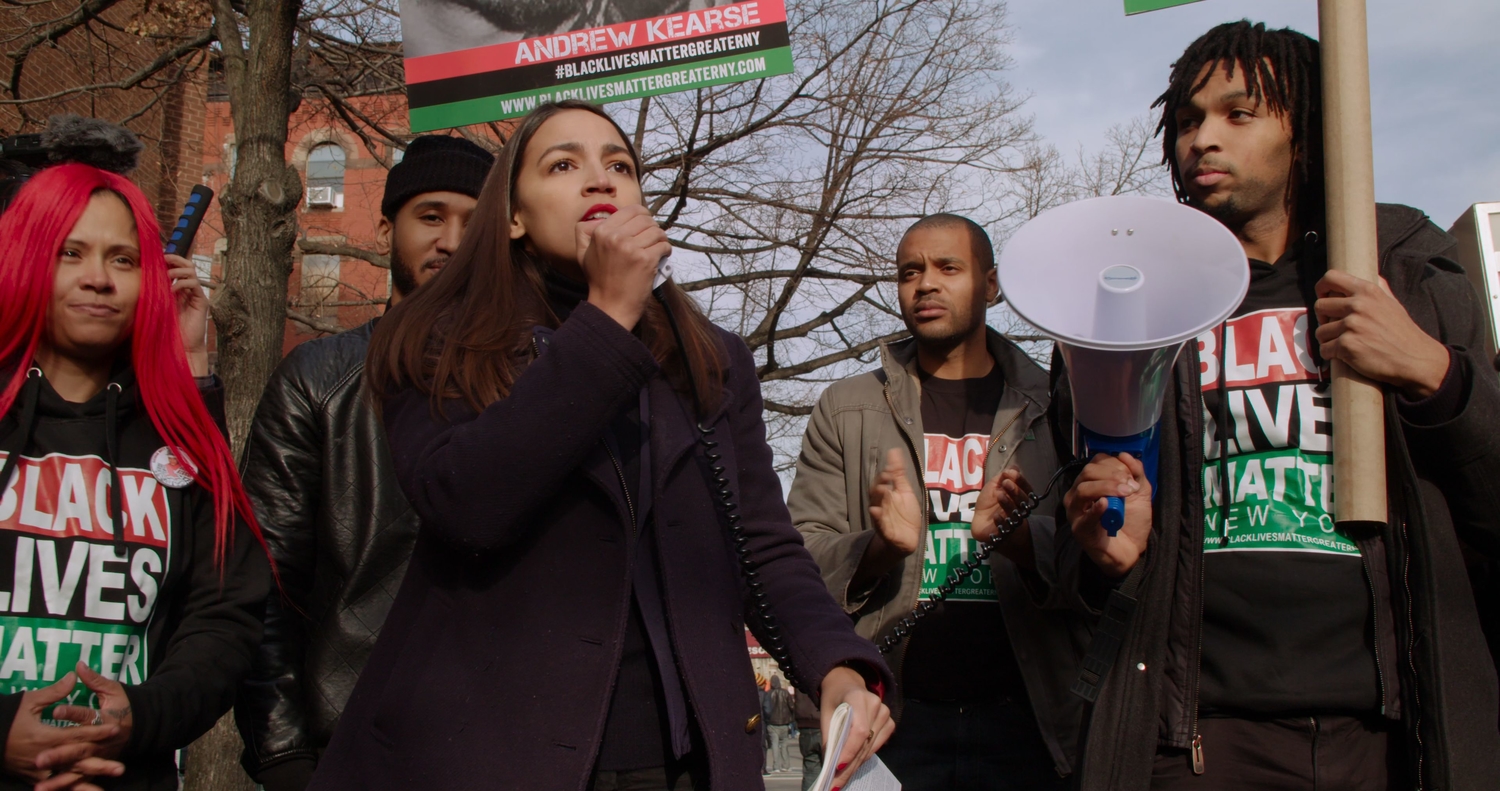
Roman philosopher Seneca once said, "Luck is what happens when preparation meets opportunity.” Apparently, Rachel Lears was listening. Her self-created luck began in 2016.
Having directed two feature documentary films (Birds of Passage and The Hand That Feeds), she had the preparation. She took the opportunity after the 2016 presidential election to contact the political action committees Brand New Congress and Justice Democrats to propose a documentary project about their plan to forge a new path to Congress for ordinary working people. Through the PACs, she met four women who had decided to mount grassroots campaigns against powerful incumbents. Those women were Amy Vilela, Cori Bush, Paula Jean Swearengin and a Bronx-based bartender named Alexandria Ocasio-Cortez. The meetings would result in Lears’ third feature film, Knock Down the House.
A seminal documentary, Knock Down the House, which Lears directed, shot, wrote and produced, follows four women who take on the congressional establishment during a time of historic volatility in American politics. The film, an IDA Enterprise Documentary Fund grantee, premiered at the Sundance Film Festival in January 2019 and took home both the US Documentary Audience Award and the Festival Favorite Award. In addition to kudos, Lears became the envy of all documentary filmmakers when Netflix acquired the film in February for a reported $10 million, making it the biggest documentary sale in history from a film festival.
But the accolades and the money came close to never happening.
Back in 2016, Lears had recently become a mother and was thinking about taking a break from political filmmaking. But then, as fate would have it, Donald Trump became president and Lears says that she “had no choice” but to remain in the political filmmaking arena. “I wanted to tell a big story in this new political reality about people working across cultural and geographical divides to change American politics in big ways,” explains the director.
Lears reached out to the Brand New Congress and Justice Democrats in November 2016, and they put her in touch with a “couple of dozen” possible candidates to follow. At the time, the director wasn’t just looking for women subjects. “I really wanted people that were going to be compelling to watch, win or lose,” she says. “Obviously these were long-shot races and we didn't know what any of the outcomes would be.”
In addition to being compelling, Lears wanted to focus on candidates—male or female— who weren't taking any corporate funds and were challenging political machines. But once it became clear that there was a historic wave of women running for office, the director says that “it felt like a natural fit to limit ourselves” to women.
Lears also felt concentrating solely on women felt right for where she was in life. “After having a child, I was very in touch with my sense of solidarity with other women and other working mothers,” she maintains. “It was time of great transition and struggle in my own life because in a lot of ways I was just trying to navigate how to continue with my career and make ends meet with a young child. And with all four [of the subjects in my film], the children in their lives are huge motivators for them to do what they do and fight for and believe in. I felt like I had a responsibility to not descend into cynicism or hopelessness [after the 2016 election]. I felt like I had to believe in something too. I owed it to my kid.”
Having made the decision to concentrate solely on women, Lears now had to figure out how many women to focus on. She decided on three or four. “I knew I wasn’t going to focus on just one subject because I did want to hedge a bit and give myself a little more of a chance that one of [the subjects] would be a win,” she explains. “I also really wanted the story to be national in scope, rather than only exploring one local context. In addition, I wanted to capture that sense of solidarity around the country.”
While she feels like most documentaries focus on three subjects, she went with four candidates because Bush, Ocasio-Cortez, Swearengin and Vilela each brought something special to the story. “It was this intuitive sense that the project worked with the four of them in it.”
By November 2017, Lears had traveled to each of her subjects’ home territories, which included Missouri, Nevada, New York City and West Virginia. There, she shot segments of what would become Knock Down the House. But first that footage would be used for a March 2018 Kickstarter campaign.
“That campaign was when we first put out the final concept for the film with a trailer featuring the four women,” explains Lears. “That was really a test of viability of the project. It wasn't clear whether the film industry was going to come on board with this project because no one knew what the outcomes of the elections would be. So when we put that trailer out there, we desperately needed external funding to continue shooting the primary season. Luckily there was a fantastic audience response. It really showed us that there was an audience for a film about these candidates, no matter what happened with the election.”
While the vast majority of the doc’s funding came from grant money, the minimal financing secured in the spring of 2018 from the Kickstarter campaign allowed Lears and her husband, Robin Blotnick, who served as the film’s writer, producer and editor, to race into production, son in tow, across four different states as some primaries were already underway.
Then on June 26, 2018, Ocasio-Cortez won the Democratic Party's primary election for New York's 14th Congressional District, and production ramped up to full gear.
“After that, there was a lot of industry interest in the film and people were like, ‘Is there a rough cut? Can I see it? When’s it going to be done? Tomorrow? Right?’ And I was like, ‘No. Actually you should have given us money a year ago. It's not done yet because that's not possible.’”
Despite the film being nowhere near completion, Lears knew that she was sitting on a gold mine due to the extensive exclusive footage she had of Ocasio-Cortez. “Alexandria was one of the first ones we started working with because she was based in New York,” says Lears, who, with Blotnick, was raising their son in Brooklyn at the time. “Early in the project we didn't have much funding, so to be able to work with her when we were based in New York was something we were able to do easily and with more frequency.”

With national interest in Ocasio-Cortez growing, the couple decided to move quickly and start editing on a full-time basis in summer 2018. Though she knew it was a long shot, Lears wanted to try and complete the film in time for Sundance 2019. “Deciding in August to go for the Sundance deadline is a little bit crazy,” she admits. “But we knew it was a once-in-a-lifetime opportunity to really strike while the iron was hot.”
Despite some people urging Lears and Blotnick to make a film solely about Ocasio-Cortez, the duo never considered the idea. “The world didn't know about the three other stories to the same degree, but we knew that there was great depths of human emotion and really high stakes in those stories that we're going to add a lot to the film,” says Lears.
Yet finding a balance among all four stories proved difficult. According to Blotnick, “The biggest challenge in terms of the edit was integrating four storylines that are happening in different parts of the country at the same time, and then figuring out the right balance when one of them had just become an overnight celebrity.”
Lears and Blotnick managed to figure it out. The film was one of the hottest titles at Sundance 2019 and its buzz factor triggered an intense bidding war among distributors. Netflix and its deep pockets ultimately won that war, but Lears says that money alone was not the only reason she decided to partner with the streamer. “The day-and-date release means that [the film] is open for community and educational screenings at the same exact time that it goes live on Netflix and in theaters. That, along with the international component of Netflix, which operates in 190 countries, was really appealing.”
The $10 million also helped.
“Listen, nobody goes into documentary filmmaking to make money, and we certainly sacrificed a lot to make this film,” Lears says. “So we feel incredibly fortunate to be able to roll out this impact campaign as well as plan our future projects from a place of economic security that we've never been in before as filmmakers. I have a ton of gratitude to the universe about all of that.”
Knock Down the House opens in theaters and premieres on Netflix on May 1.
Addie Morfoot has been covering the entertainment industry for the last 15 years. Her work has appeared in Variety, The New York Times Magazine, Crain's New York Business, The Wall Street Journal, the Los Angeles Times, Documentary and Adweek. Her personal essays have been published in The New York Times, Marie Claire, Salon, Cosmopolitan.com and the Los Angeles Times.
